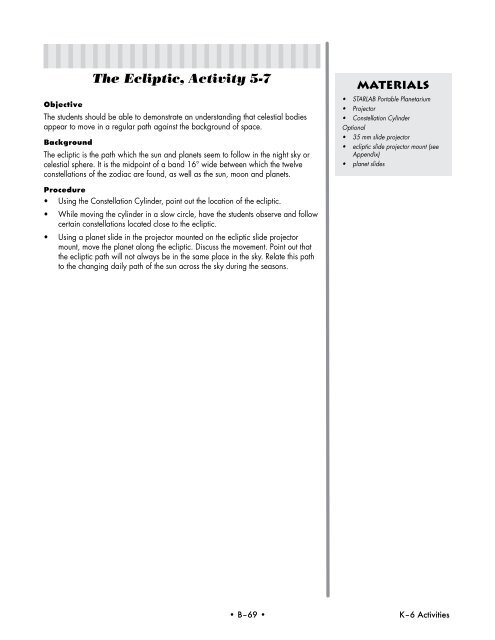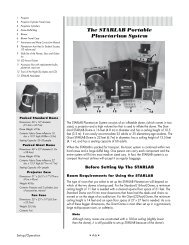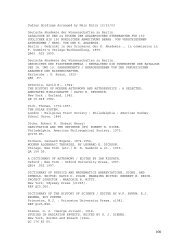K-6 Activities - Dudley Observatory
K-6 Activities - Dudley Observatory
K-6 Activities - Dudley Observatory
You also want an ePaper? Increase the reach of your titles
YUMPU automatically turns print PDFs into web optimized ePapers that Google loves.
Objective<br />
The Ecliptic, Activity 5-7<br />
The students should be able to demonstrate an understanding that celestial bodies<br />
appear to move in a regular path against the background of space.<br />
Background<br />
The ecliptic is the path which the sun and planets seem to follow in the night sky or<br />
celestial sphere. It is the midpoint of a band 16° wide between which the twelve<br />
constellations of the zodiac are found, as well as the sun, moon and planets.<br />
Procedure<br />
• Using the Constellation Cylinder, point out the location of the ecliptic.<br />
• While moving the cylinder in a slow circle, have the students observe and follow<br />
certain constellations located close to the ecliptic.<br />
• Using a planet slide in the projector mounted on the ecliptic slide projector<br />
mount, move the planet along the ecliptic. Discuss the movement. Point out that<br />
the ecliptic path will not always be in the same place in the sky. Relate this path<br />
to the changing daily path of the sun across the sky during the seasons.<br />
Materials<br />
• STARLAB Portable Planetarium<br />
• Projector<br />
• Constellation Cylinder<br />
Optional<br />
• 35 mm slide projector<br />
• ecliptic slide projector mount (see<br />
Appendix)<br />
• planet slides<br />
• B–69 • K–6 <strong>Activities</strong>





